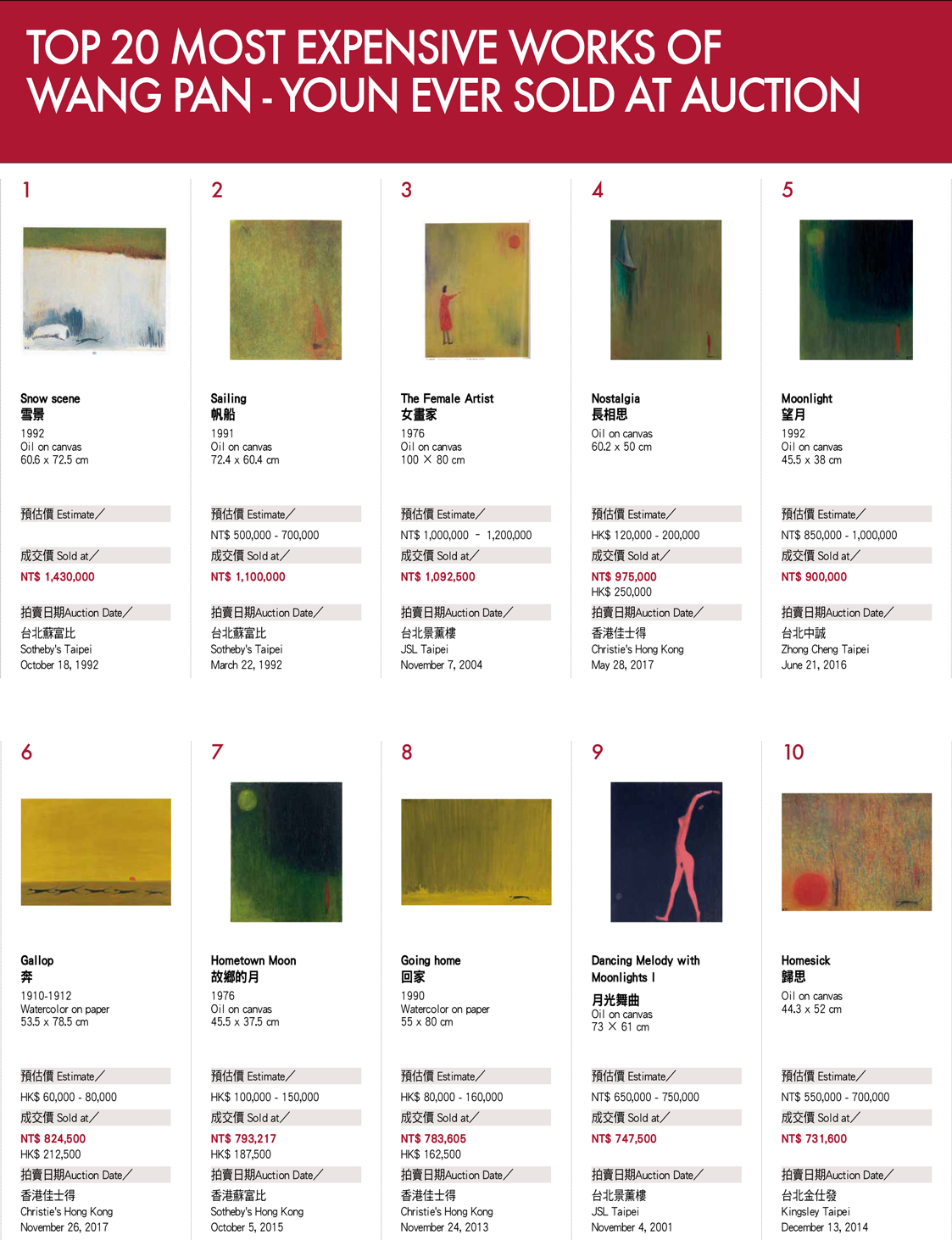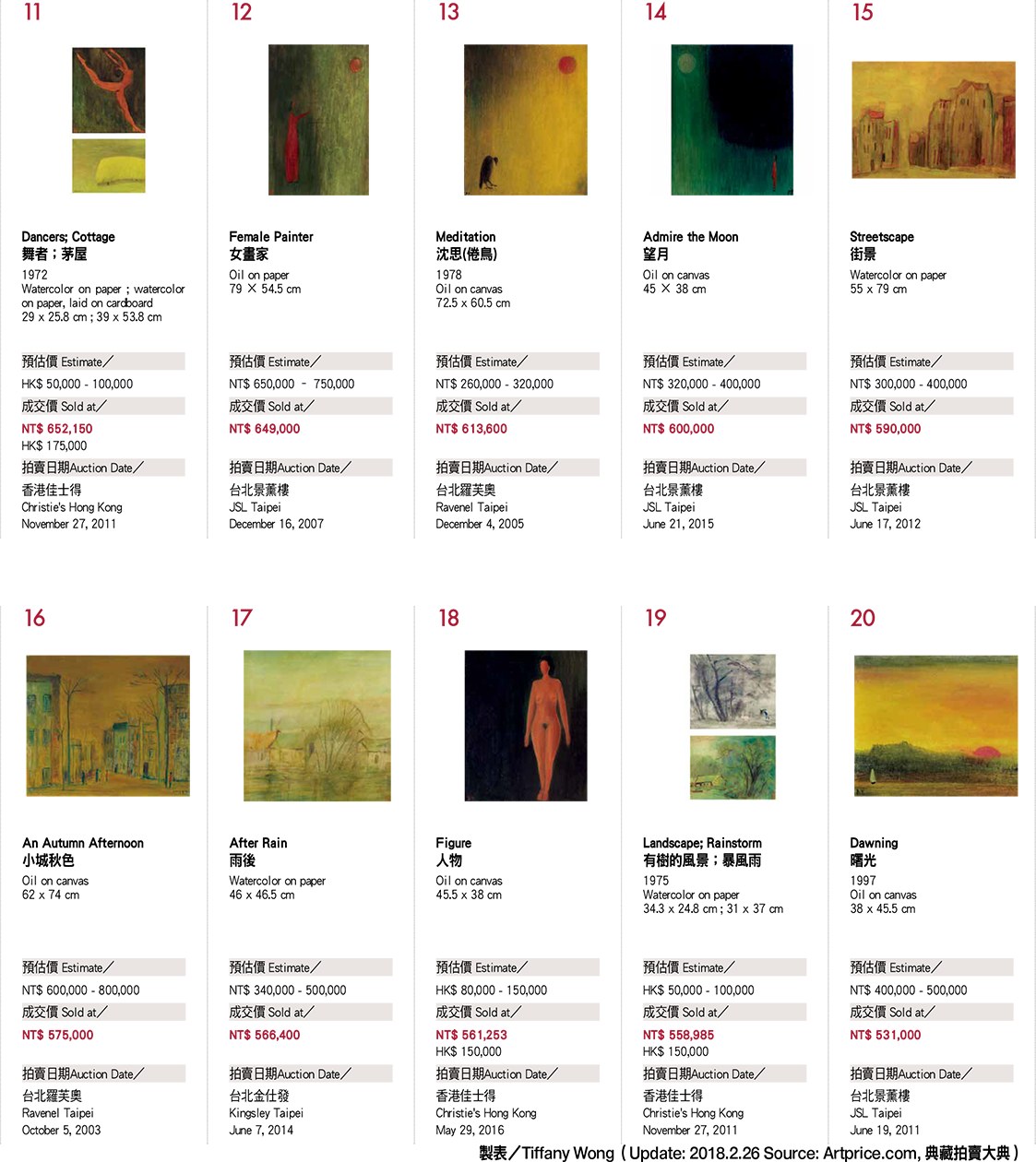Art Column
SOLITARY HERO: WANG PAN-YOUN’S LIFE IN PAINTING
Odile Chen / Ravenel Quarterly No. 24 Spring 2018 / 2018-04-11
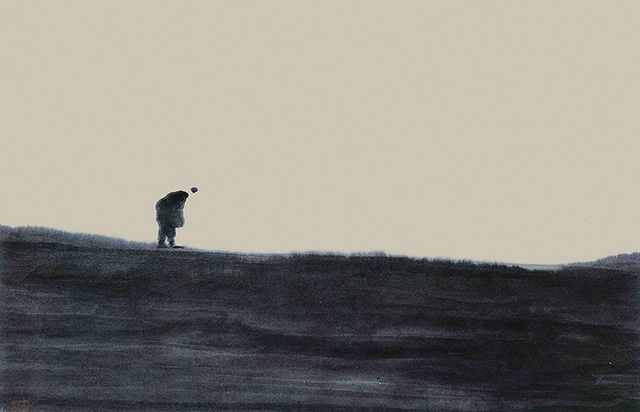
“A painter needs to possess one’s personal characteristic and theme, that is solitude” said Wang. Wang Pan-youn’s paintings bring about the everlasting sanctity and boundless sense of solitary to people. The work of “Tears of Hero” is believed to be the last painting executed by the praised Taiwanese treasured master, of which the work represents a bitter life of his. Is it not the time of era and of faith that has contributed to such loneliness? Despite a lack of perfected life, there was no doubt that he was well-deserved the title of “the Poet of the Canvas”.
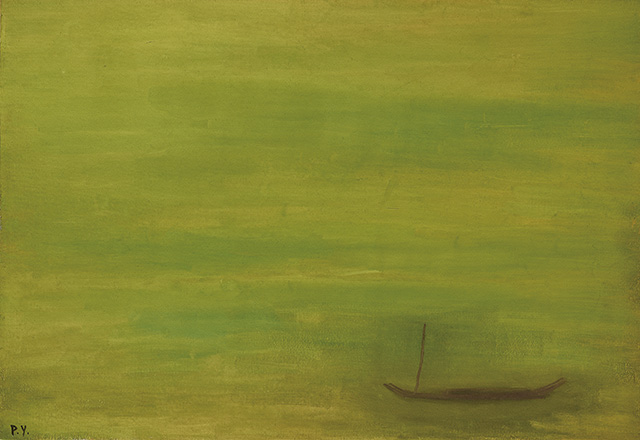
Wang Pan-youn (1912-2017), one of the longest-living Chinese artists. Following an early life of wandering, he eventually settled down in Yilan in the northeast of Taiwan where he has lived for over 60 years. His harsh aesthetic, simple yet bold painting style and pursuit of the spiritual, entrusted a treasure of enduring talent of his impassioned paintings to future generations. Wang Pan-youn is known as a “National Treasured Artist” and “Poet of the Canvas”, an emissary of 20th century fine arts.
In 2001, close to his 90’s, upon being recognized with the 5th National Arts Award of Taiwan, the awarding judge remarked: “Wang Pan-youn, an introspective artist, remained committed to his painting throughout a challenging lifetime. Arrived in Taiwan in 1949, he painted steadily for fifty years under trying circumstances. Through all the noise in the public sphere of the time, he always engaged in the process of introspection. He manifested a unique and refined style using profound emotion and concise themes throughout the period of his career on in Taiwan.”
He was once a familiar yet lonely artist, making appearances in the capital city for big shows, while mindfully avoiding the commotion of the world, likely the result of circumstances encountered on his rough journey through life. His paintings, implying complex emotions but using imagery simple in form, availing viewers plenty of room for the imagination.

The Yilan Museum of Art was opened in 2015, the first opening retrospective exhibition was attributed to that of the sounding local artist, showcasing the total of 72 recent and earlier works of Wang Pan-youn, including 38 oil painting, 17 watercolor and 17 ink wash paintings. Despite the exhibition was organized for the grand opening and the museum is under the governance of the local county, the scope of the exhibition could not be comparable to the 2001 exhibition of the National Museum of History: "In Pursuit of Solar Perfection: a Self-selected Exhibition of Wang Pan-youn at Ninety." Since the museum and Wang Pan-youn had a dated history, the museum was familiar with his life’s work and maintained a close connection with his family While planning the final exhibition of the living artist’s work, the National Museum of History was supposedly the most appropriate venue. However, the original planned schedule of the show was suppose to be arranged for October 2017, but the curator responsible for the show was changed at the last minute, and the family members of Wang were unacceptable of this sudden change of plan and direction, hence the show was put off at the end. Later, through the coordination of the Ministry of Culture, the exhibition was rescheduled for May of 2018. The artist tried to wait for this final exhibition in the very last stages of his life, but in the end he did not make it. Wang passed away on December 22nd at the age of 106. The retrospective exhibition thus unexpectedly became a posthumous exhibition. And although Wang’s family and the art community had no regrets, they lamented that the artist’s life was never complete as the ascending arc of the wanderer’s life came to a close.

To dedicate Wang's life to the people and land of Lanyang, two months prior the 2018 Chinese New Year, has decides to hold two exhibitions just they have organized “The Poet’s Gaze – a special exhibition of the collection of the Yilan Museum of Art” and established a “Tribute to a Master – Wang Pan-youn” area, showing a documentary film and displaying a chronology of his life events and publications to allow visitors to gain a better understanding of the remarkable ascent of this artist’s life.
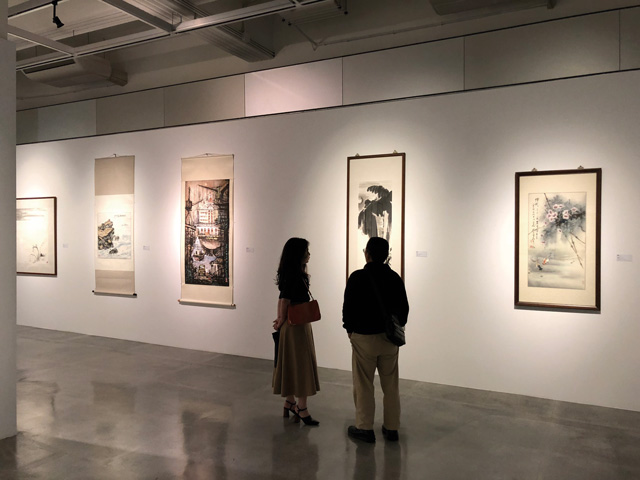
In May of 2018, the National History Museum of Taiwan will hold a posthumous exhibition showing a total number of 150 paintings including oil, water and ink paintings. The paintings will be sourced from the National History Museum of Taiwan, the Taipei Fine Arts Museum, the collection of the Cultural Affairs Bureau of Yilan County, besides the collections of the Wang family, pieces borrowed from galleries and private collectors. After the end of this exhibition, the National History Museum of Taiwan will be closed for two and a half years for maintenance and upgrades of the warehouse and exhibition halls.
Tragedy and Hubris Originated in the Painting

Wang Pan-youn once remarked that: “My view on life: Reading, writing, love and painting - Each of these four elements are indispensable, otherwise there would be no fun in life.” Wang Pan- youn’s life is present in microscope in each of his paintings. The character of the painting reflects the character of the person. His at once rough and fortunate life, people can read through his tender brushworks as depicted in the paintings.
Wang Pan-youn was born in the first year the Republic an Era in 1912, to a distinguished family in the village of Xujiahong in northern Jiangsu Province. He was from a large and wealthy family. The clan residence was modeled after those of the royal family, covering an area of 10,000 ping, surrounded by ancient trees and with the canal passing behind the homestead. During the holidays there were thirty to forty servants. His father loved the traditional arts and could play the pipa. His mother loved literature. Yet, as fate would have it, this fortune did not endure as he lost both of his parents due to illness, first his father when he was three, then his mother when he was thirteen. Orphaned in his youth, his uncle assumed control over family finances. Thus, Wang was dependent on him to continue his schooling. In primary school, he had expressed interest in painting. In Huaian middle school he met Wu Huizhi (1900-1977) who had a lasting influence on him, confirming and encouraging his ability to paint and establishing his lifelong artistic path. In 1933 he tested into the Fudan University department of law, but found it unsuited to his aspirations, so he transferred to the Western Arts department of Shanghai University, where he met Zhang Xian (1893-1936) who had studied in France at École des Beaux-arts. The principal was Liu Haisu (1896–1994) who introduced figurative drawing in China, his watercolor teacher was Chen Renhao (1908- 1976), his graduate school instructors were Pan Yu-liang (1895-1977) and Wang Jiyuan (1893-1975) and his Chinese painting teachers were Zhu Wenyun (1895-1939) and Pan Tianshou (1897-1971).
People often feel that the painting style of Wang Pan-youn some has a resemblance to that of Sanyu (1895-1966), perhaps it is due to the fact that both artists were born into wealthy families, then forced to leave home, falling into poverty without finding recognition. Zhang Xian and Sanyu were close during their time in Paris in the 1920s. Sanyu's influence is evident in his sketches of the human body and the simplicity of his freehand technique may well have influenced the student Wang Pan-youn at the Shanghai Academy of Fine Arts. Just as he was about to graduate in 1936, he contracted typhoid fever and was hospitalized. During that time, he met Ji Zhujun of the National Academy of Music who cared for him and covered all of his medical expenses until he was discharged. This chance encounter and the emotions provoked during this lonely and helpless stage of his youth, left him with beautiful memories, which he carried with him for the rest of his life. After graduation, he and Ji Zhujun were to follow their teacher Pan Yu-liang to Paris to study abroad, but he was unable to persuade his family to finance his study. In addition to the outbreak of the Battle of Shanghai, his only option was to remain in China, and lost contact with Ji Zhujun thereafter.
In 1940s China, war was frequent and life was wearisome. By chance he met the bright-eyed Ni Yueqing from his home village and they fell in love. Because of the chaotic situation and fear that they may become the subject of struggles in their home province, they decided to abandon everything and left for Shanghai with Ni Yueqing. The two were married in 1948 and in 1949 they followed the Kuomintang government to Taiwan, settling at first in the Fengshan district of Kaoshiung, where he worked as a dockworker to make ends meet. In 1952, he was hired as the principal of Luodong Middle School, which brought him to Yilan. They took up a thatched hut temporary shelter in. Under financial pressure and physical weakness, the couple often depended on the support of friends. Even so, he still encouraged his students by asupplying his meager daily allowance to support the creativity of young painters. Wang Pan-youn 's character was noble, having known the warmth of life and also its cold destitution, yet persevered in his love of painting, cultivating the lofty and proud temperament of the Chinese literati.
Wang Pan-youn once remarked that: “A painter needs to possess one’s personal characteristic and theme, that is solitude” his paintings impart to the viewer a sentiment of eternal spiritual search, and a sense of infinite loneliness. From birth he preferred the quiet and held short patience for the ruckus of family life, developing an inward nature. Although he maintained his solitary nature into his later years, his introvert nature was not simply the result of the tragedy of his times and circumstances - having to endure the loss of his loving family at an early age, losing economic independence, facing challenges on his path to his studies, being unable hold on to his beloved, and finally being forced to leave his home and go to a foreign land. He experienced great adversity but was fortunate to have the support of a few good friends. Reed Lee, (1921-2010) also from his home province, encouraged him on several occasions to participate in art expositions in Taipei so that more may discover his unique art.
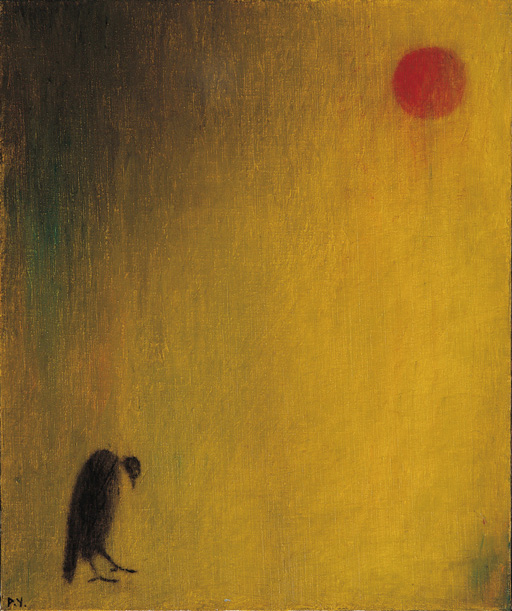
Exhibitions were successful, but the seclusive artist was in no interest of selling the works.
In 1959, Wang Pan-youn held his debut exhibition at the Luodong Water Management Council, showing 30 ink wash paintings and 30 water color paintings, all of which were sold at the event, creating quite a stir in Yilan at the time. In 1961, Wang, together with fellow artists, co-founded the Lanyang Painting Society, marking a golden era of his creativity. In 1964, he met artists such as Reed Lee, Max Liu, Pang Tseng-ying and Liu Yu from the Jixiang Painting Society, when they came to Yilan for exhibiting their works. He bonded with Reed Lee, with whom he became close friends. Reed Lee admired Wang Pan-youn’s paintings greatly, calling him Yilan’s hidden treasure. He felt that Wang’s water colors had a unique expression, representing a kind of literati thought and Chinese essence.
Later, Reed Lee wrote to Wang Pan-youn to invitd him to include his paintings in the exhibition he's having in Taipei, convinced him that the show would be a success. Thus, Wang showed 32 of his water color paintings at the Asia International Art Gallery on Zhongshan North Road in Taipei in 1966. At the time, the Hollywood filming team was shooting “The Sand Pebbles” in Taiwan. The production team came across Wang's paintings, and was highly interested in purchasing all of the paintings, or none at all. Throughout the art world, amazed people in the art community and was extremely significant for Wang Pan-youn’s profile as an artist. The show was met with positive reviews, garnering NT$20,000 from the sales Wang was both shocked and elated, as the money would certainly be a big help to his family. The fact that not a single painting was left, however, he couldn’t help but feel remorse about them being gone. He was never motivated by money in his painting and he never paid much attention to the utility of the market.
Regardless of the fact that he had been married twice (he married his first wife, surnamed Sun, when he was a student at Shanghai Fine Arts College) and had eight children, giving him a heavy burden, he never gave up painting, even through the tough times when he first came to Taiwan and then when he was teaching on a limited salary. He pursued painting purely for personal reasons and interests and not for profit. He was “a painter without an easel”, who used doors or bed boards for most paintings, tables for smaller ones, and the floor for his larger works. For oil paintings, he used the back of chairs, or the walls near windows. He would be immersed within his work and forget to eat, often painted into the night, and still felt content even in hardship.
In 1973, Wang Pan-youn applied for retirement due to poor health. His children were already independent, and thus he could concentrate on his painting. In 1979, Wang showed his paintings again in Taipei at the Spring Fine Arts Gallery. His works have also been included in the collection of the Taiwan Fine Arts Museum (now the National Taiwan Museum of Fine Arts). In earlier times, those who understand Wang Pan-youn's works came from abroad. Besides from the previously mentioned case where the Americans bought all of the his early works, many of his ink wash paintings on show at the Hsiung Shih Gallery in 1987 were also snatched up by Hong Kong collectors. There was even a German collector, Hermann Fixl, who was obsessed with Wang Pan-youn’s art. It was during Fixl's business trip to Taipei in 1995, Fixl happened to see a joint exhibition of senior artists at the CKS Memorial Hall. Seeing Wang’s paintings, he was in awe. He originally thought that the artist must be a younger person because, although Wang’s style was Chinese in essence, it was also quite avant-garde. In fact, according to Fixl, Wang was the most unique Chinese painter he's ever known, and couldn’t believe that Wang was already in his eighties. With the help of a local friend, he visited the painter in Yilan three times, wishing to procure one of his abstract painting which, had been on display. Knowing someone like Hermann Fixl who deeply appreciate and understood his painting, Wang Pan-youn finally decided to sell it to him. Similarly, many collectors who love Wang Pan-youn’s works are to be found in Yilan.
Wang Pan-youn had his first solo exhibition at the National Museum of History in 1987, where 60 of his oil and water color paintings were shown, one of the most complete showings of his work ever. The museum has maintained a deep connection with Wang and his works, having six paintings by Wang in the museum collection, including Guishan, Great Northern Wilderness, The Waters of the Yellow River and so forth. In addition to international art galleries, Spring Fine Arts Gallery and Hsiung Shih Gallery having held exhibitions of Wang’s works, Mingjen Gallery, Asia Art Center, Eslite Gallery and Metaphysical Art Gallery have also held solo exhibitions of his work. But having to discuss and organize and exhibition for Wang’s was never easy given his reclusive and anxious personality. He would always refuse to sell his paintings or turn down any exhibition invitations. In his later years, he even rejected the proposal of the Yilan County Government and Cultural Affairs, to establish a Fine Arts Museum dedicated to Wang Pan-youn. Instead, he donated ten or more paintings to the Yilan Culture Center without any compensation , given the condition that whatever the amount they would gain from the sale of the paintings, would go toward helping out other younger artists.
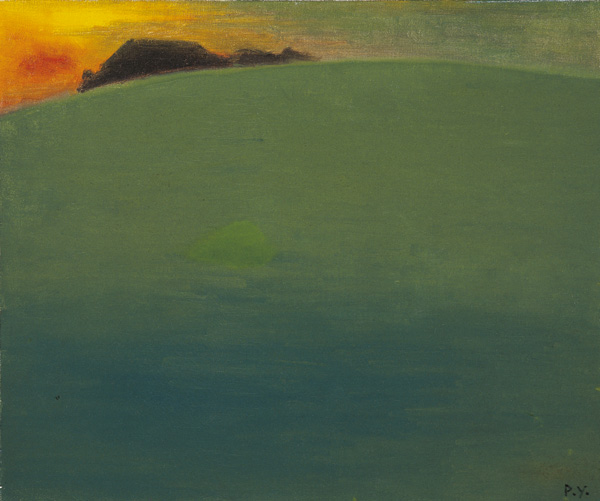
In 1992, two of Wang Pan-youn’s oil paintings, “Sailing” and “Snow Scene”, were sold for NT$1.1 million and NT$1.43 million respectively at the spring and fall offerings of Sotheby’s premier auction event in Taiwan, placing Wang into the company of artists whose works have sold in the millions. In 1993, the Taipei Museum of Fine Arts added Wang’s works to its permanent collection. To date, however, the Sotheby’s transactions still mark the highest recorded price at auction for Wang Pan-youn’s works, which begs the question as to why the market sentiment for his paintings differs from that for other artists of his age or even for younger artists? Actually, the primary reason is that he was reluctant and unwilling to sell his paintings, and even forbade his family from selling them. Even in his late years when he was still quite conscious, he would think about a particular painting and have his children check for his procession as if he as conducting an inventory check regularly. Thus, the circulation of Wang’s paintings on the market are extremely limited. According to knowledgeable sources, galleries who had worked with Wang for years had difficulty in persuading him to provide them with paintings for exhibitions, even during the meeting being held at his home, Wang would instruct his family members to hide the paintings, avoiding the exposure of his works to the event holders.
In 2003, Wang Pan-young was the recipient of Taiwan’s Arts and Business Award. China Times Publishing Company commissioned Li Kuizhong, a well known Yilan writer, to write about Wang Pan- youn’s biography, “Loneliness and Sentiment”. In 2005, the Council of Cultural Affairs and Link Lion Fine Arts Publishers jointly produced “The Fine Arts Museum at Home” publication, featuring Wang Pan-youn’s work. In his later years, Wang enjoyed a high level of recognition for his accomplishments in the art world, received visits from Chen Shui-bian and Ma Ying-jeou, the former presidents of Taiwan, to whom he also gifted his paintings to. Thus, this elderly artist became known as one of Taiwan’s national treasures.
According to biographer Li Kui-Chung's recollection, Wang Pan- youn directly told him that when Wang came to Taiwan in 1949, he was afraid that anyone 40 years or younger would be snatched up for military service, so Wang added three years to his reported age. As a result, it is Li Kui-Chung's opinion that Wang's family were worried he only did this because the elder Pan had been labeled a "forger". Actually, his actions were due to the chaos of war, and were of no great harm. But the truth is most important; Mr. Wang Pan-youn was indeed a great painter of his age, born in the first year of the Republic of China — 1912.
A painter needs to possess one’s personal characteristic and theme, that is solitude” said Wang. Wang Pan-Young’s paintings bring about the everlasting sanctity and boundless sense of solitary to people. The work of “Tears of Hero” is believed to be the last painting executed by the praised Taiwanese treasured master, of which the work represents a bitter life of his. Is it not the time of era and of faith that has contributed to such loneliness? Despite a lack of perfected life, there was no doubt that he was well-deserved the title of “the Poet of the Canvas”.

Modernity and Orientalism
The work of "Tears of Hero" was executed in 2006, it was considered as the final piece of work by Wang Pan-youn. It was a large painting mostly covered in black with just the suggestion of clouds on the upper left corner, and the lower right corner is left with touches of white as if it is the edge of a cliff. The artist’s daughter, speaking of her 97-year-old father, said that he didn’t buy the canvas and paints at the time with the intention of painting his final great work. Nevertheless, outsiders rarely saw any of his work after this one. Other works may exist, but they were never shown in public. Wang was still quite lucid in his communications with his family about his work before he passed away. In 2015, with his family at his side, Wang attended the premier event of the Yilan of Art Museum. He was a multi-talented oil, water color, ink wash and calligraphic artist. He was also a romantic poet and occasionally expressed his feelings about the past and people he missed, which could bring the artist to tears even in his nineties.
His paintings are with dept and simple compositions in a few different styles with layer upon layer of color, slowly condense into an expression of the emotions of his life intertwined with blood and tears, which is why only people who truly liked his work were aware of his paintings. It is also the reason as to why there were limited circulation of his works in the market. As opportunists or people with the intention of selling his works as an investment would find it difficult to engage with him, it was also something that the artist would not want to see.
Wang Pan-youn once said: “I prefer paintings with open space. I like to leave space when talking to people. I like to meditate and reflect, and not having to contend with people.” His thinking transcends times, while his unique use of color and space to convey memories as a faintly discernible mysterious metaphor, the cultural connotation is deeply embedded in Eastern cultures. The themes of his paintings included the creative artistic concepts of people, nudes, nature and animals. Whichever the subject it is, from people, birds, dogs, cows, goats or eagles, they are all incarnations of himself, constituting an autobiographical monologue. Female nudes or dancers in his work signal memories of the loves of his youth, somewhat nostalgic of the place where he grew up. Thus, the artist mingled love and nostalgia together through the layered colors of dreams and feelings. A boat, the sun or the moon, on the other hand, were poignant symbols expressing his feelings, an artistic concept similar to poetry used to dilute the pain of his life and homesickness. His landscape paintings are not expressive melodies of beauty. At times, they have a distinct avant garde style, comprised only of a single color in an abstract composition conveying a modern feeling. In the later period of Wang’s oevre, the simpler they became, achieving a supreme sense of the absolute, an exciting and amazing experience.
As mentioned earlier, Hsiung Shih Gallery organized an exhibition of Wang Pan-youn's ink wash paintings. Works included landscape, ink wash lotus, figure, impressionistic, and splashed color paintings. These ink wash paintings are distinctive in their own right. In his student years and when he first came to Taiwan, Wang used to practice ink wash paintings and calligraphy when he wasn’t painting water colors or doing sketches. And he didn’t just produce a few ink wash paintings at a time. When ever he got the inspiration, which usually happened when he was studying in the middle of the night, he would produce ten or more in a single session. He would put them aside for a while and return to develop them further or to change them later on. It was only after he was satisfied with his work would he put down his brush, which is why some of his ink wash paintings appear to be similar in composition.
“I have always felt that there must be an essence or vitality to the substance of a painting. For example, the splash of the brush stroke of a splashed color painting allows the picture to have a dynamic element that renders the picture grand and magnificent and truly interesting, and when people look at it, it’s like seeing a hero with all the glory.” Wang Pan-youn was always passionate about his paintings. Look back at the artist’s life, both of his personal character and the character of his paintings are admirable and deserved being known as the master of the generation.
